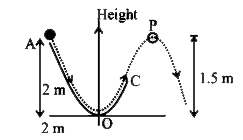Assertion-The free gaseous Cr atom has six unpaired electrons.
Reason-Half-filled s-orbital has greater stability.
If both assertion and reason are true and reason is the explaination of assertion.
If both assertion and reason are true but reason is not the correct explaination of assertion
If assertion is true but reason is false
If both assertion and reason are false.
The correct Answer is:C
To solve the question, we need to analyze both the assertion and the reason provided.
1. Understanding the Assertion:
- The assertion states that the free gaseous chromium (Cr) atom has six unpaired electrons.
- To verify this, we need to look at the electronic configuration of chromium.
2. Finding the Electronic Configuration of Chromium:
- The atomic number of chromium (Cr) is 24.
- The expected electronic configuration based on the Aufbau principle would be:
Cr: (Ar)4s23d4
- However, chromium is an exception to the expected configuration due to stability reasons. The actual electronic configuration is:
Cr: (Ar)4s13d5
- This configuration shows that one electron from the 4s subshell has been promoted to the 3d subshell to achieve a half-filled d-subshell.
3. Counting Unpaired Electrons:
- In the configuration 4s13d5:
- The 4s subshell has 1 unpaired electron.
- The 3d subshell has 5 unpaired electrons (since all five d-orbitals can hold one electron each before pairing).
- Therefore, the total number of unpaired electrons in chromium is:
1 (from 4s)+5 (from 3d)=6 unpaired electrons
- This confirms that the assertion is true.
4. Understanding the Reason:
- The reason states that a half-filled s-orbital has greater stability.
- In reality, half-filled orbitals (like 3d5) are indeed more stable due to symmetry and exchange energy, but the 4s orbital is not half-filled in chromium. It has only one electron, which does not confer the same level of stability as a half-filled orbital.
5. Evaluating the Assertion and Reason:
- The assertion is true (Cr has 6 unpaired electrons).
- The reason is false (it incorrectly states that half-filled s-orbitals are more stable, while it's actually the half-filled d-orbitals that confer stability).
- Thus, the correct conclusion is that the assertion is true, but the reason is false.
Final Conclusion:
The correct option is C: Assertion is true, but the reason is false.
---
- The assertion states that the free gaseous chromium (Cr) atom has six unpaired electrons.
- To verify this, we need to look at the electronic configuration of chromium.
- The atomic number of chromium (Cr) is 24.
- The expected electronic configuration based on the Aufbau principle would be:
Cr: (Ar)4s23d4
- However, chromium is an exception to the expected configuration due to stability reasons. The actual electronic configuration is:
Cr: (Ar)4s13d5
- This configuration shows that one electron from the 4s subshell has been promoted to the 3d subshell to achieve a half-filled d-subshell.
- In the configuration 4s13d5:
- The 4s subshell has 1 unpaired electron.
- The 3d subshell has 5 unpaired electrons (since all five d-orbitals can hold one electron each before pairing).
- Therefore, the total number of unpaired electrons in chromium is:
1 (from 4s)+5 (from 3d)=6 unpaired electrons
- This confirms that the assertion is true.
- The reason states that a half-filled s-orbital has greater stability.
- In reality, half-filled orbitals (like 3d5) are indeed more stable due to symmetry and exchange energy, but the 4s orbital is not half-filled in chromium. It has only one electron, which does not confer the same level of stability as a half-filled orbital.
- The assertion is true (Cr has 6 unpaired electrons).
- The reason is false (it incorrectly states that half-filled s-orbitals are more stable, while it's actually the half-filled d-orbitals that confer stability).
- Thus, the correct conclusion is that the assertion is true, but the reason is false.
The correct option is C: Assertion is true, but the reason is false.
Similar Questions
In the grouns state carbon atom has how many unpaired electron ?
View SolutionAssertion : O2 is paramagnetic.
Reason : It has one unpaired electron.
View SolutionAssertion: ionisation energy of sulphur is less than that of phosphorus.
Reason: Half filled p-orbitals have extra stability.
View SolutionA particle (m = 3 kg) slides down a frictionless track (AOC) starting from rest at a point A (height 2m). After reaching C, the particle continues to move freely in air as a projectile. When it reaching its highest point P (height 1.5 m) the kinetic energy of the prarticle (in J) is : Figure drawn is schematic and not to scale , take g = 10ms−2

View SolutionWhich of the following has unpaired electron(s)?
View SolutionAccording to ……………..rule, nitrogen atom has ……………unpaired electrons
View SolutionNitrogen atom has 3 unpaired electrons in its ground state. It can be explained by
View SolutionWhich atom has as many 's' electrons as P-electrons
View SolutionCr in [Cr(NH3)6]Br3 has number of unpaired electron :
View SolutionWhich of the following molecular species has unpaired electrons(s) ? .
View Solution